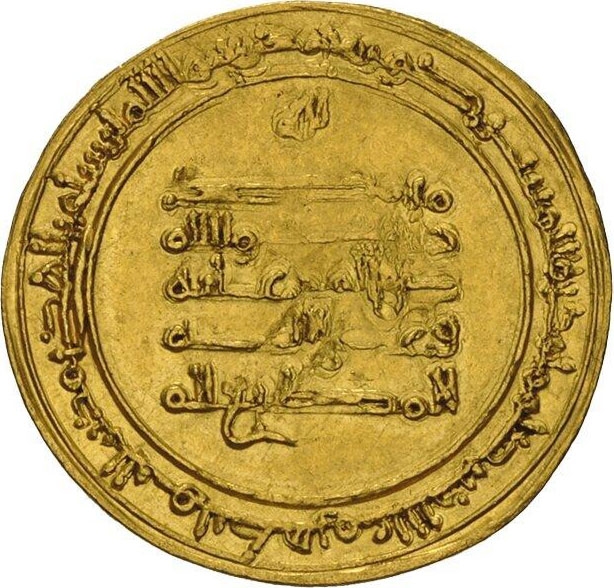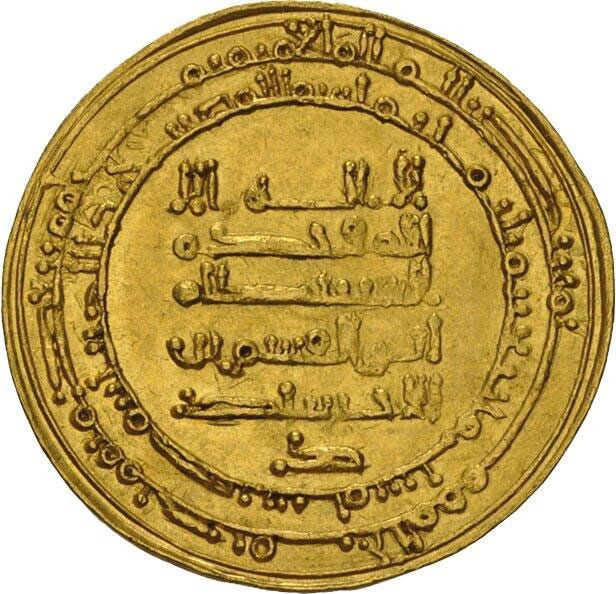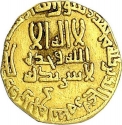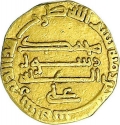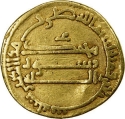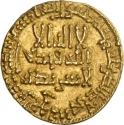You are about to finish your registration. Please check your mailbox (including spam folder). There should be a letter with a confirmation link. Check setting to make sure that your e-mail address is correct.
Send letter againDescription
These coins (Donative Dinar) were struck for special purposes, usually for presentation by rulers to notables and visiting dignitaries. They are known as presentation coins, largess coins, or donatives, of which the last term is my choice in most cases. Many were of the large module with especially fine calligraphy, often with pictorial designs as well. Others were small fractions, finely engraved, intended for distribution to the general populace, somewhat like the Maundy coins of England.
The Abbasid Caliphate (Arabic: الْخِلَافَةُ الْعَبَّاسِيَّة) was the third caliphate to succeed the Islamic prophet Muhammad. It was founded by a dynasty descended from the prophet's uncle, Abbas ibn Abdul-Muttalib (566–653 CE), from whom the dynasty takes its name. They ruled as caliphs for most of the caliphate from their capital in Baghdad in modern-day Iraq, after having overthrown the Umayyad Caliphate in the Abbasid Revolution of 750 CE (132 AH). The Abbasid Caliphate first centered its government in Kufa, modern-day Iraq, but in 762 the caliph Al-Mansur founded the city of Baghdad, near the ancient Babylonian capital city of Babylon. Baghdad became the center of science, culture and invention in what became known as the Golden Age of Islam. This, in addition to housing several key academic institutions, including the House of Wisdom, as well as a multiethnic and multi-religious environment, garnered it a worldwide reputation as the "Center of Learning".
Abū ʾl-Qāsim al-Faḍl ibn al-Muqtadir (913/14–974), better known by his regnal name of al-Mutīʿ li-ʾllāh (lit. 'Obedient to God'), was the Abbasid caliph in Baghdad from 946 to 974, ruling under the tutelage of the Buyid emirs.
Al-Muti's reign represented the nadir of the Abbasid caliphate's power and authority. In previous decades, the secular authority of the caliphs had shrunk to Iraq, and even there had been curtailed by powerful warlords; with the Buyid conquest of Baghdad, it was now abolished entirely. Al-Muti was raised to the throne by the Buyids and was effectively reduced to a rubber-stamp figurehead, albeit with some vestiges of authority over judicial and religious appointments in Iraq. The very fact of his subordination and powerlessness helped restore some stability to the caliphal institution: in stark contrast to his short-lived and violently deposed predecessors, al-Muti enjoyed a long and relatively unchallenged tenure and was able to hand over the throne to his son al-Ta'i.
The Ikhshidid dynasty was a Turkic mamluk dynasty that ruled Egypt and the Levant from 935 to 969. Muhammad ibn Tughj al-Ikhshid, a Turkic Mamluk soldier, was appointed governor by the Abbasid Caliph al-Radi. The dynasty carried the Arabic title "Wāli" reflecting their position as governors on behalf of the Abbasids. The Ikhshidids came to an end when the Fatimid army conquered Fustat in 969. The Ikhshidid family tomb was in Jerusalem.
Obverse

|
Depicts the inscriptions in Arabic "For God", "Muhammad is the Messenger of God", "may God bless him and his family”, "al- al-Muti lilah" (Caliph) and “He sent him with guidance and the true religion to make it victorious over every religion although those who associate others with God dislike it.” لله |
|---|---|
Reverse

|
Depicts the inscriptions in Arabic “There is no god but God alone / He has no associate", ""Abu'l-Qasim bin al-Ikhshid", Arabic letter "K" below is generally an abbreviation for the name of Kafur, an Abyssinian slave who had been bought as a slave by Muhammad al-Ikhshid, "To God belongs the command before and after, and at that time the believers will rejoice in the victory of God" and "In the name of God. This dinar was struck in Misr (Egypt) in the year 346." لا اله الا |
| Edge |
